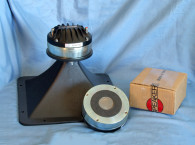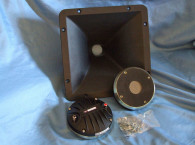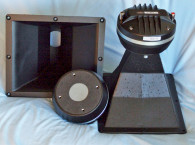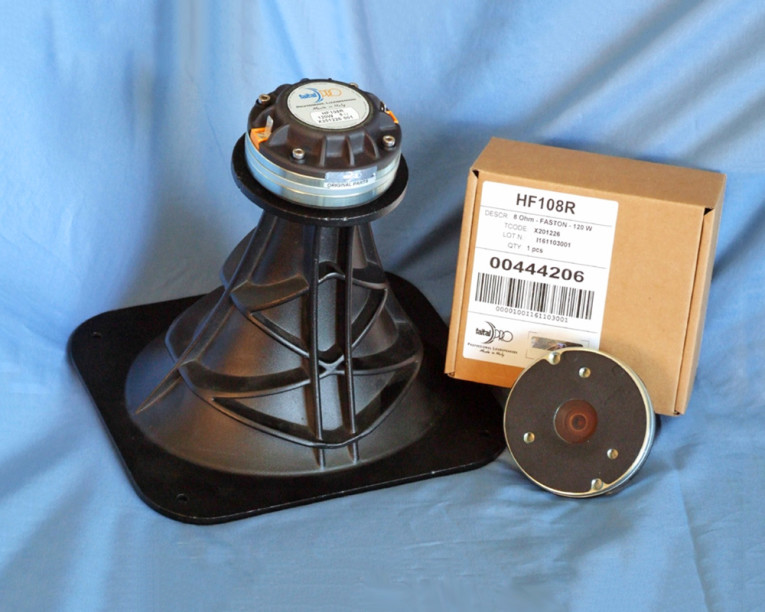
Features for the HF108R include a Ketone polymer annular-shaped diaphragm and an annular-shaped phase plug. Throat diameter is 25.4 mm (1”) and is coupled to a 44 mm (1.73”) diameter voice coil wound on a Kapton former with aluminum wire. Other features include a cast-aluminum body, a 60 W AES-rated power handling (120 W maximum), a neodymium ring magnet motor, and solderable terminals (see Photo 1).
Compared to the HF108 compression driver, the HF108R incorporates a more rigid clamping system on the diaphragm. This creates a more subtle listening experience when the distance between the enclosure and the target audience is limited (as in a bar / club / restaurant or for a home listening situation) since it is typical for the compression drivers to be somewhat overwhelming when listened to in the near field. This requires additional machining in the gap as well as the alternative clamping method. The horn supplied with the HF108 driver is Faital Pro’s cast aluminum 1” throat 60°H × 50°V elliptical tractrix flare LTH102.

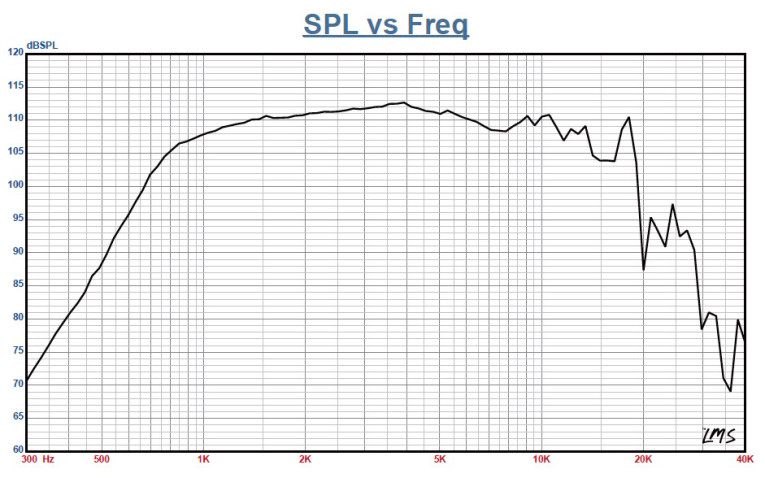

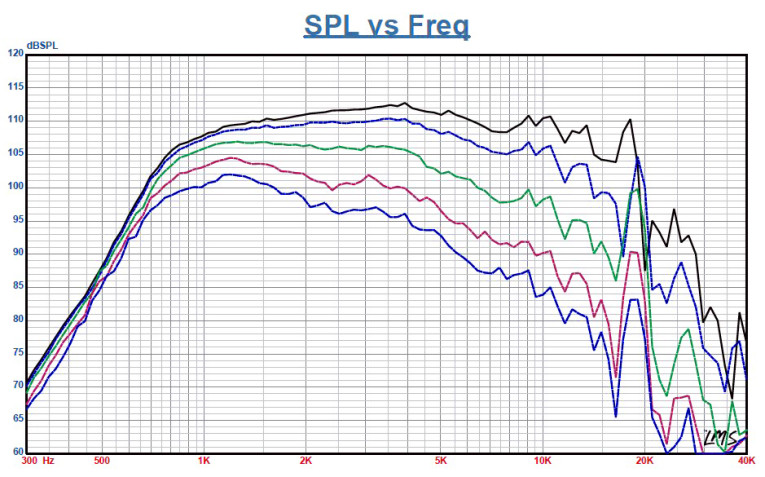
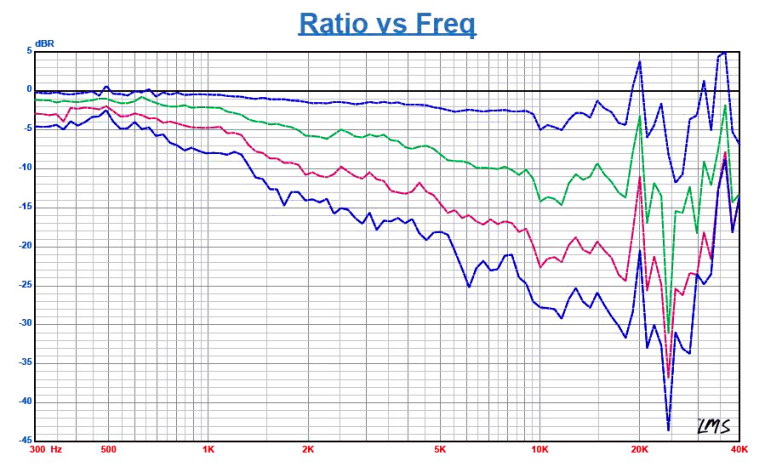
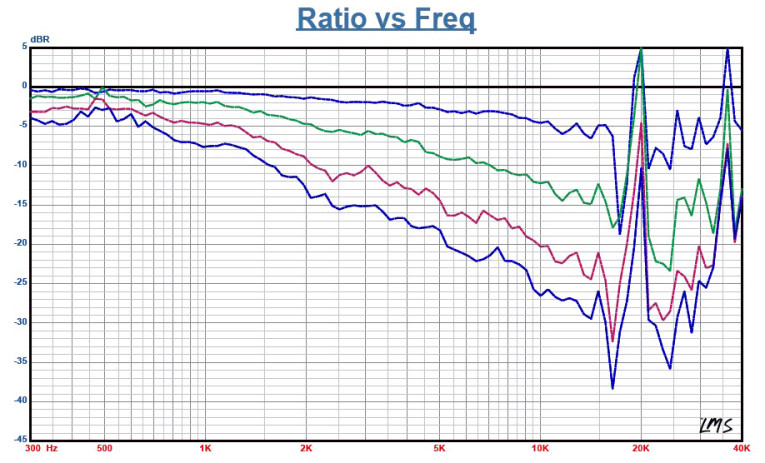
I began the series of tests on the HF108R using the LinearX LMS analyzer to produce the 200-point stepped sine wave impedance plot shown in Figure 1. The solid black curve represents the HF108R mounted on the LTH102 horn. The dashed blue curve represents the compression driver without the horn. With a 5.81 Ω DCR, the minimum impedance of the HF108R/LTH102 was 6.74 Ω at 6.4 kHz.
Next, I recess mounted the HF108R/LTH102 without an enclosure in free air then measured the horizontal and the vertical on and off axis at 2.83 V/1 m using a 100-point gated sine wave sweep. Figure 2 displays the on axis of the compression driver/horn combination. The response is approximately ±3 dB from the minimum recommended crossover frequency, 1.3 kHz to 6.4 kHz, with a declining response to the low-pass rolloff.
With LTH102 horn’s coverage pattern being 60°H × 50°V, you wouldn’t expect much of a difference in the horizontal and vertical off-axis plots, which is indeed true. Figure 3 shows the horizontal orientation. Figure 4 shows the vertical orientation. Figure 5 and Figure 6 show the plots with the off axis normalized to the on-axis response for the horizontal and vertical axis measurements, respectively, with the CLIO polar plots (with 10° increments) shown in Figure 7 and Figure 8. Figure 9 gives the two-sample SPL comparison of the HF108R/LTH102, showing both samples to be closely matched.
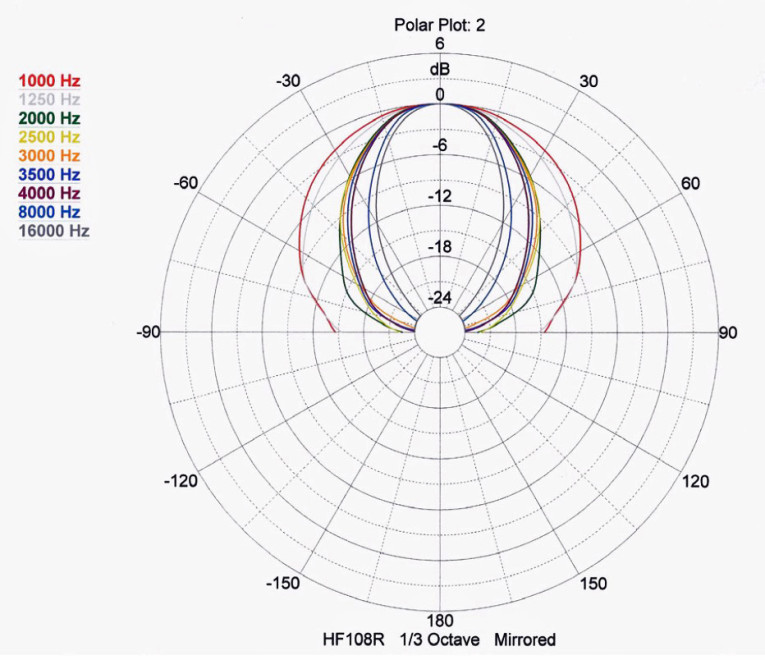

For the remaining series of tests, I used the Listen, Inc. AmpConnect ISC analyzer and 0.25” SCM microphone with the SoundCheck 14 software to measure distortion and generate time-frequency plots. Next, I mounted the HF108R/LTH102 combination in free air sans baffle and set the SPL to 104 dB at 1 m (1.49 V), using a pink noise stimulus. Then, I measured the distortion with the Listen microphone placed 10 cm from the horn’s mouth. Figure 10 shows the resulting distortion curves.
I then used SoundCheck to get a 2.83 V/1 m impulse response and imported the data into Listen’s SoundMap Time/Frequency software. Figure 11 shows the resulting cumulative spectral decay (CSD) waterfall plot. Figure 12 shows the Short-Time Fourier Transform (STFT) plot.
The HR108R is a solid performer. I think it’s great that Faital Pro crafted a compression driver specifically intended for close monitoring situations.
For more information, visit www.faitalpro.com
In the US, contact Faital USA, Inc., Keith Gronsbell, 220 West Parkway, Unit 13 Pompton Plains, NJ, 07444, call (516) 779-0649, fax (973) 835-5055, or email.
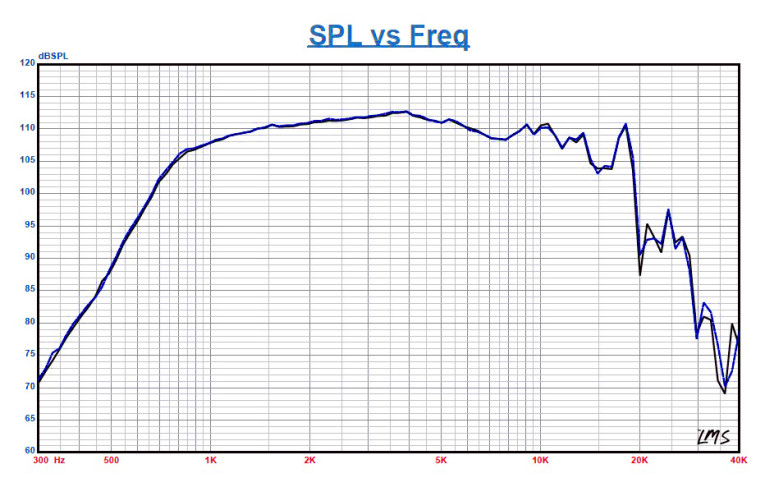
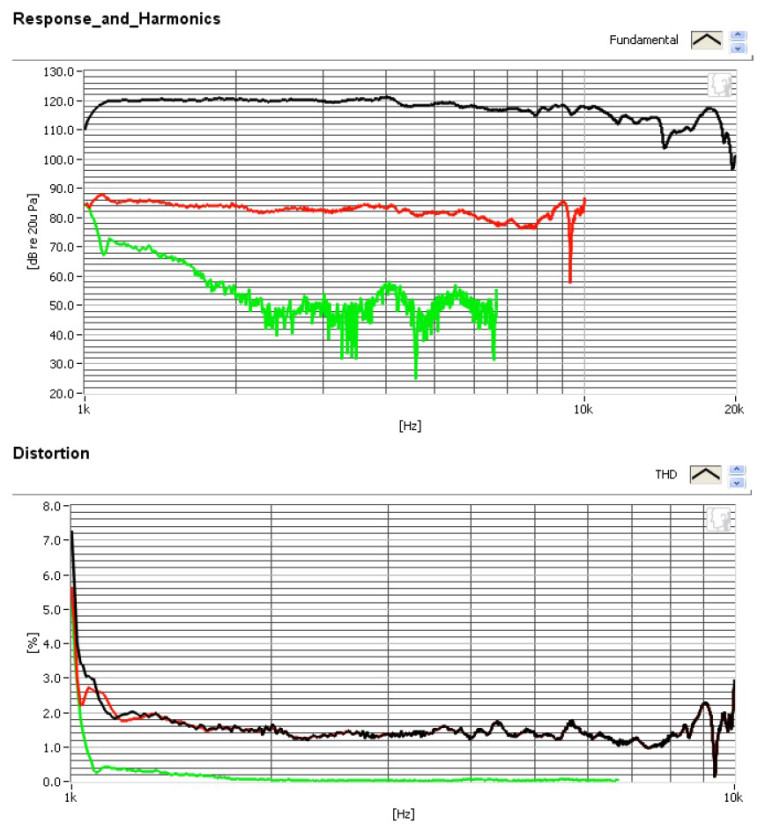
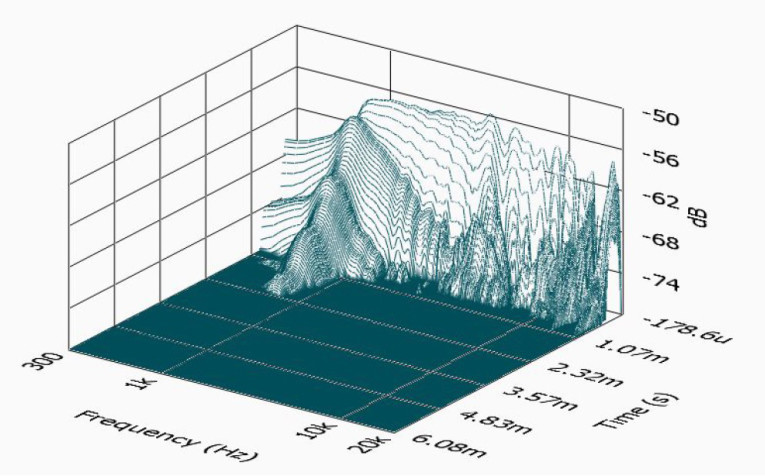
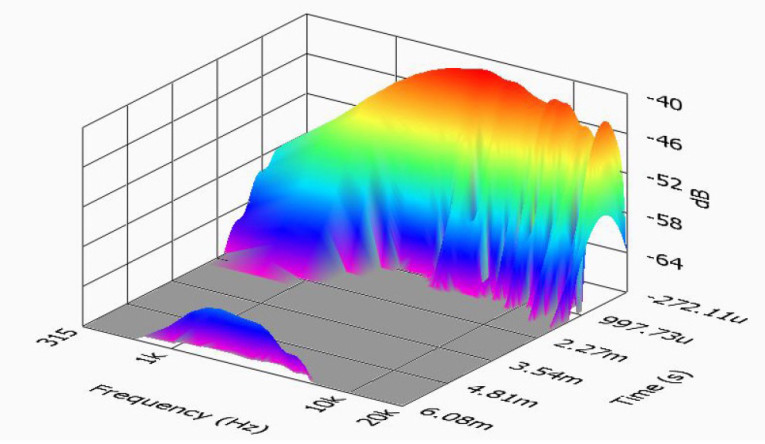
This article was originally published in Voice Coil, November 2016.




